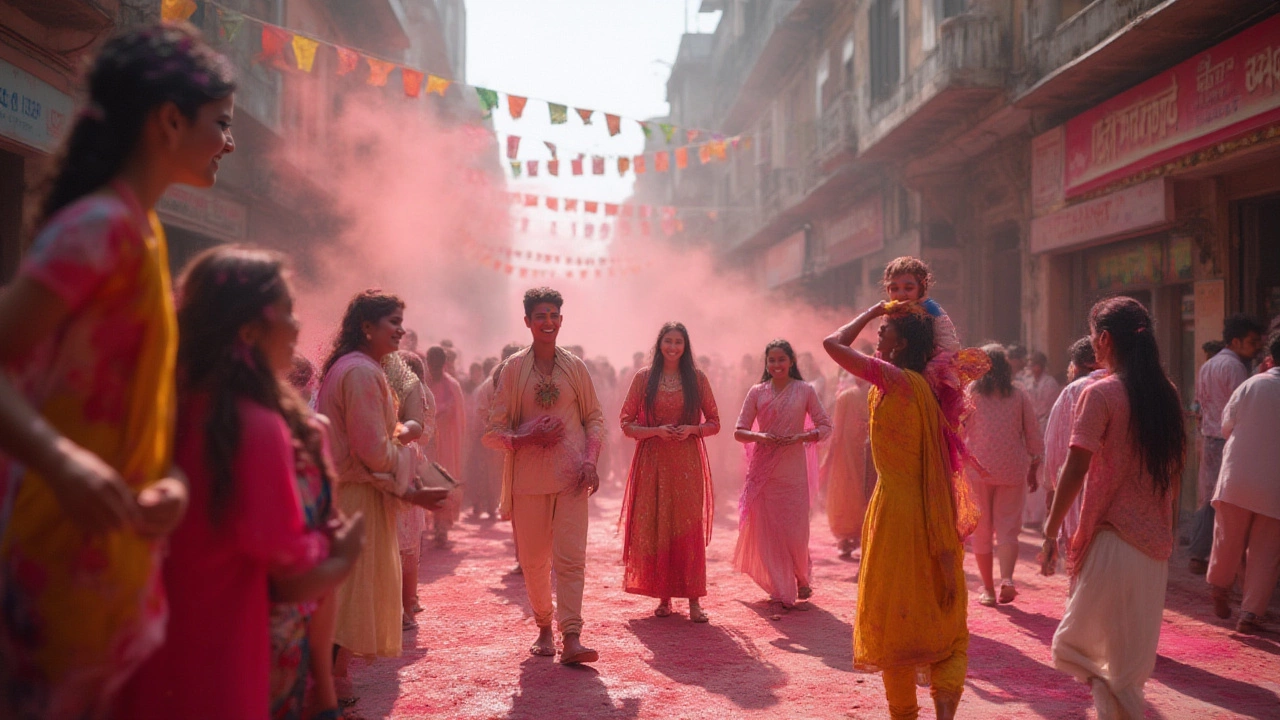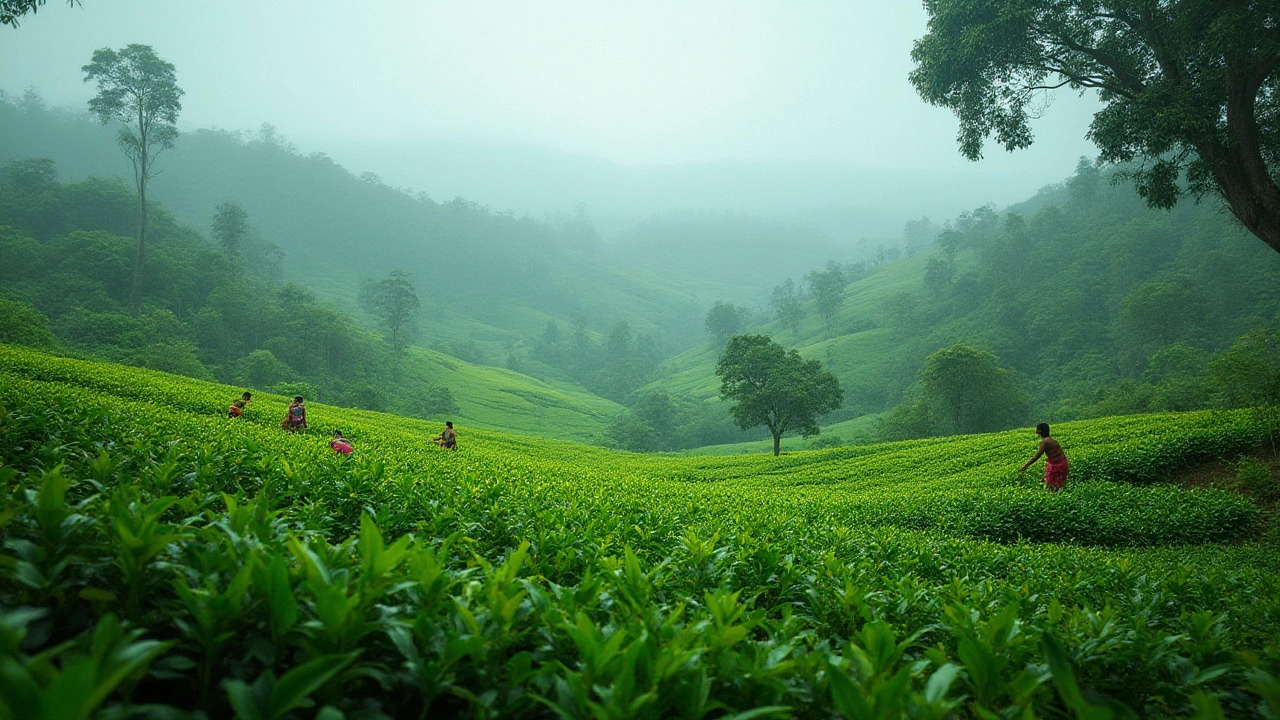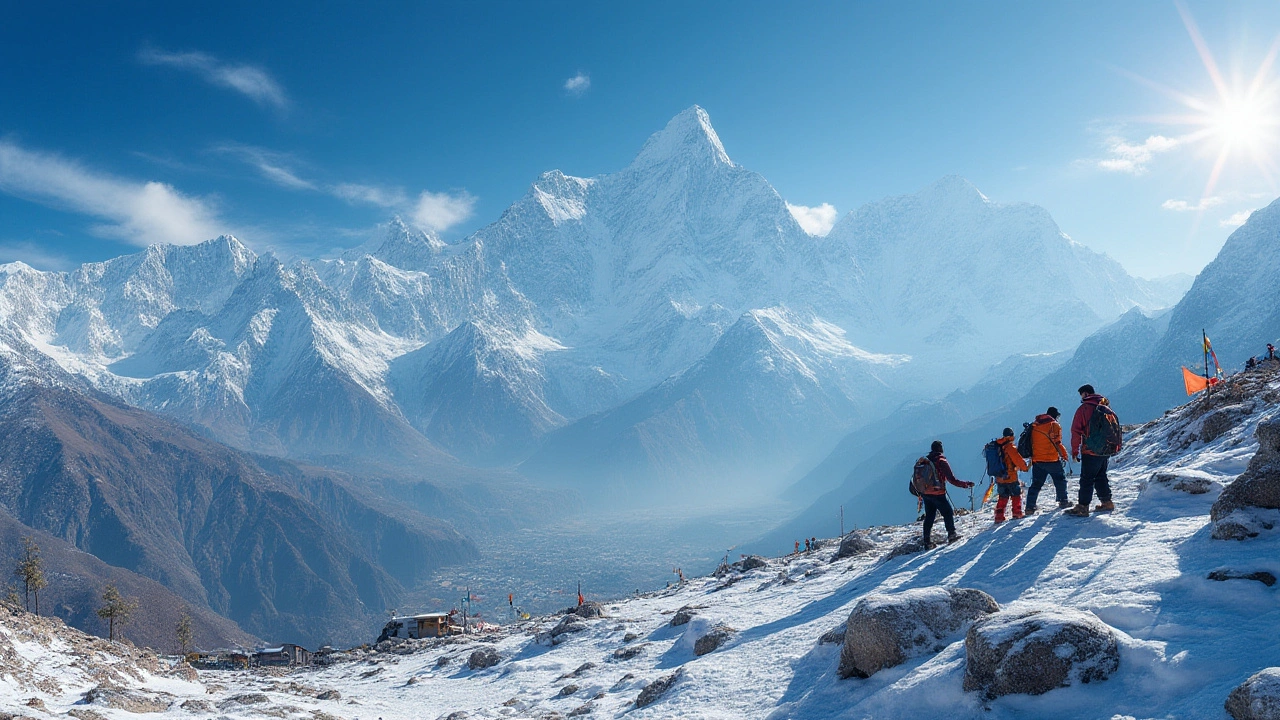Best Time to Visit India: Guide to Weather, Festivals & Seasonal Highlights
 Jul, 10 2025
Jul, 10 2025
There’s something wild about India’s calendar. As the year spins through its months, the country flips through completely different moods. You might see camel caravans moving through Rajasthan’s chilly mornings in January, or witness wild red gulals exploding into the sky during Holi in March. Ask a dozen seasoned travelers about their best time to visit, and you’ll get a dozen passionate answers, all varied and brimming with personal favorite moments. But trust me—timing your trip to match what you really want out of India will kick your experience to a whole new level.
Decoding India’s Climate: What the Weather’s Really Like
India isn’t just big—it’s a patchwork quilt of climates. The north deals with winter chills that bite, while the south barely knows what cold feels like. From June to September, the southwest monsoon sweeps in, drenching Kerala’s coconut palms and making the rivers of Goa swell like crazy. Most guidebooks break the year into three simple seasons: winter (November-February), summer (March-May), and monsoon (June-September). But honestly, that’s just scratching the surface.
Let’s break it down a bit:
- Winter (November-February): The north shivers at night, sometimes pulling out thick pashmina shawls. Delhi’s temperature falls to about 8°C (46°F) at night, while the Rajasthani desert feels downright icy after sunset. Meanwhile, Mumbai and Goa sit at a lovely 25°C (77°F)—the perfect backdrop for a beach holiday or wandering quiet temples without melting.
- Summer (March-May): Streets sizzle, especially in central India. Temperatures peak above 40°C (104°F) in places like Varanasi and Chennai. But up in the Himalayas—think Shimla or Ladakh—the snow’s melting and adventure season starts. Summer is also the start of mango season, just in case you want to eat the world’s juiciest Alphonsos straight out of a roadside stall.
- Monsoon (June-September): Thunder rolls in, and everything changes. Kerala’s backwaters overflow, the rainforest in Meghalaya turns otherworldly, and Munnar’s tea plantations shimmer in emerald. In Mumbai and Kolkata, umbrellas become fashion statements and locals joke about traffic swimming more than driving. Traveling by road can get unpredictable, but train rides through lush, rain-soaked valleys are experiences in themselves.
Not convinced yet? Here’s a quick look at typical temperatures around India:
| City | Winter Low (°C) | Winter High (°C) | Summer High (°C) | Monsoon Rainfall (mm) |
|---|---|---|---|---|
| Delhi | 8 | 21 | 43 | 174 |
| Mumbai | 18 | 30 | 35 | 575 |
| Kolkata | 12 | 24 | 39 | 400 |
| Goa | 20 | 32 | 36 | 850 |
| Leh (Ladakh) | -10 | 7 | 21 | 25 |
So yeah, India is all about microclimates. If you’re into cool weather, aim for winter. But if churning waterfalls, jungle hikes, or Ayurveda treatments (which are popular in monsoon) are your thing, taking on India when the cloudbursts come might be your sweet spot.
Peak Season vs. Off Season: Pros, Cons, and Untold Surprises
Most travelers hit up India between October and March. You’ll find clean air (outside major cities, at least), fewer mosquitoes, and lots of cultural festivals. It’s the season for rooftop parties in Jaipur, beach raves in Goa, and yoga retreats on Kerala’s coast. But the “peak” life means prices jump. Hotels fill up fast—sometimes months ahead in tourist hubs like Agra or Varanasi. If you plan to visit famous temples, get ready for lines or rising ticket rates. Everything’s more expensive, from flights to chai stalls outside top attractions.
Now, let’s talk about “off season”—basically, the Indian summer and monsoon months. This is when most crowds vanish, prices nosedive, and locals run the show. Sure, heat can sap your energy, especially if you’re not a fan of sweating through two shirts before breakfast. But it’s also the time when you can find serious hotel deals—sometimes half the cost of November or December. Offbeat places like Spiti Valley or the Western Ghats come alive with waterfalls and emerald-green vistas. It’s also the season for tea, coffee, and monsoon food specials (don’t miss piping hot pakoras with masala chai during a thunderstorm).
- Travel tip: In monsoon, use trains whenever possible—delays are fewer than in bumper-to-bumper road travel.
- If you’re on a budget, off-season = your jackpot.
- For wildlife safaris, winter and early summer are when tigers and elephants come out to waterholes in central India’s parks.
- Summer unlocks trekking, river rafting, and the wild beauty of Himachal Pradesh, Uttarakhand, and Sikkim. But do book in advance for the Himalayan spots. Locals, trekkers, and adrenaline junkies all descend here from May onwards.

Major Festivals and Events: When India Parties Hardest
Plan your trip around a festival, and you’ll get a hit of India’s electric soul. There’s Holi in March—a riot of color that’s fun, emotional, and slightly chaotic if you go hard in Varanasi or Mathura. Navratri comes around September-October, lighting up Gujarat and West Bengal. Diwali, the festival of lights, usually falls in October or November and turns every house into a shimmering sea of lamps and firecrackers. If you’re into music, Rajasthan’s desert hosts the Jodhpur RIFF (Rajasthan International Folk Festival) every October.
Don’t skip regional events either. Kerala has boat races in August, Mysore throws its grandest party for Dussehra in September or October, and Pushkar Camel Fair—one of the world’s wildest animal markets—happens in November. Ramadan and Eid celebrations in Delhi, Hyderabad, or Lucknow offer treats beyond belief—seek out the night markets for kebabs, biryani, and all-night chai conversations.
There are literally hundreds of smaller festivals—you’ll stumble on marriage processions, temple fairs, and local concerts even if you don’t plan it. If there’s a tip here: always check local festival calendars for the region you plan to visit. Some travelers return again and again just to experience different festivals—each one is unique, often bewildering, but always unforgettable. And don’t be shy about jumping in—the best thing about Indian festivals is that everyone is invited.
Top Spots by Season: Where to Go and When to Go
Trying to figure out where to travel during each season? Here’s the lowdown—but remember, personal choices rule. Some want snow, some want surf.
- Winter: This is the sweet spot for the Golden Triangle (Delhi–Agra–Jaipur), Madhya Pradesh’s wildlife parks, Varanasi’s riverside rituals, and the sun-soaked beaches of Goa and Kerala. Taj Mahal’s marble glows at sunrise, and you won’t melt wandering Rajasthan’s forts. If you want mountain magic without the risk of landslides, visit Rajasthan’s cooler desert nights or the Andaman Islands’ coral reefs.
- Summer: Head north, where the Himalayas put on their lushest show. Ladakh, Spiti Valley, and Sikkim open their passes and welcome trekkers, cyclists, and photographers. Shimla and Manali come alive with apple blossoms, while Darjeeling’s tea gardens are a shade of green that’ll blow up your Instagram. Tamil Nadu and Karnataka do get hot, but morning temple visits or afternoon keralan backwater trips keep things cool.
- Monsoon: Western Ghats is where monsoon magic happens—Munnar, Coorg, and Lonavala explode into wild green beauty. Kerala’s houseboats cruise through misty canals, and waterfalls like Jog Falls or Athirapally roar their loudest. Goa’s beaches empty out, which means long quiet walks and rainy day nap marathons. Northeast states like Assam and Meghalaya become rice-green carpets, but pack a rain jacket.
Need a quick map? Here’s a breakdown:
| Season | Best Regions | Activities |
|---|---|---|
| Winter | North India, Rajasthan, Goa, Kerala | Palaces, beaches, tiger safaris, river cruises |
| Summer | Himalayas, Ladakh, Northeast | Trekking, mountain drives, monasteries |
| Monsoon | Western Ghats, Kerala, Northeast | Nature hikes, Ayurvedic retreats, waterfalls |

Insider Tips for Every Traveler: How to Get the Best Trip
If you want to experience India, plan around what matters most to you. Here’s how to hack your trip for max fun and minimum hassle:
- Book early for peak season – especially for trains and iconic hotels (imagine the palaces of Udaipur or those cool boutique joints in Delhi’s old city).
- If you’re heat-averse, skip the plains in April or May. Instead, jump straight into the Himalayas—think fresh air, rhododendron flowers, glaciers.
- Try Ayurvedic spa therapies during monsoon. The treatments are believed to be most effective when the air is moist and cool.
- Keep an eye out for local festivals. Even the smallest village event can be a total knock-out surprise.
- Pack for surprises. India’s weather swings hard—carry a good rain jacket for the monsoon, layers for the cold north, sunblock for the coast, and bug spray in the humid zones.
- Learn a few local words—it always makes travel smoother and friendlier.
- Stay flexible, especially in the monsoon. Floods, landslides, or festival roadblocks can pop up, but sometimes these odd detours become the best part of the trip.
If there’s one truth about the best time to travel India, it’s that there’s always a spot and a season that will blow your mind. Plan a little, wander a lot, and let India throw a few curveballs—it’s half the story anyway. Every season tells a different tale, waiting for someone ready to listen.